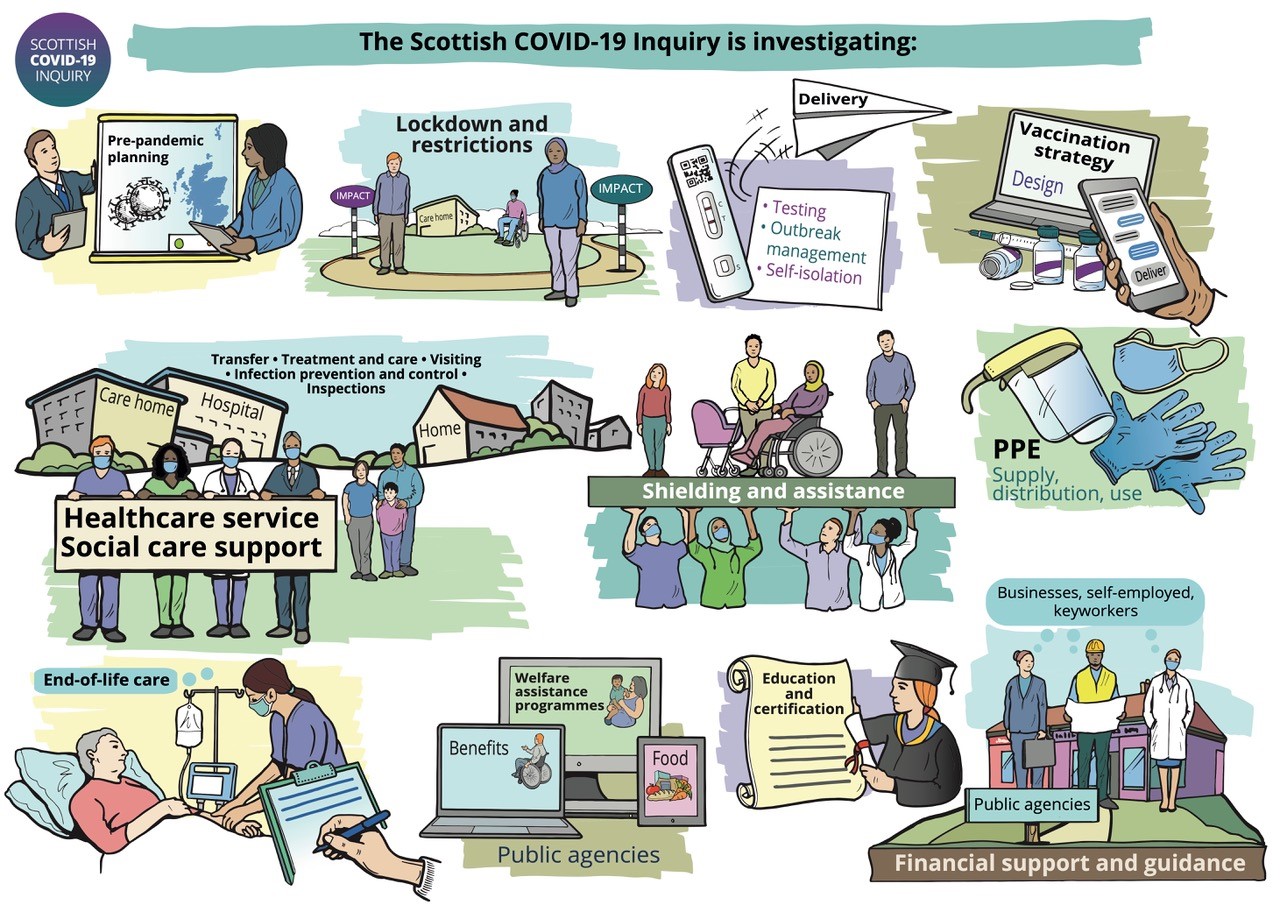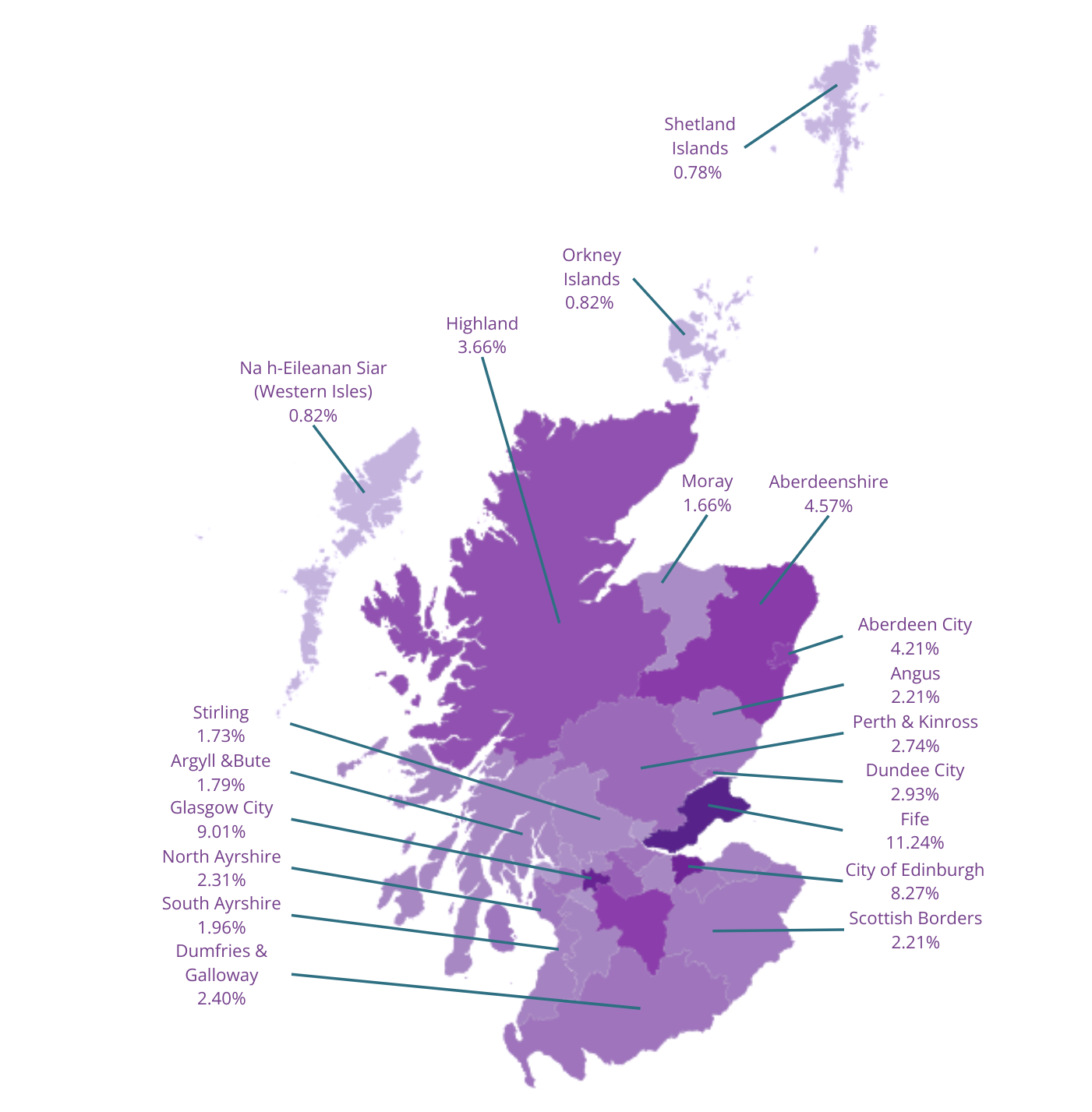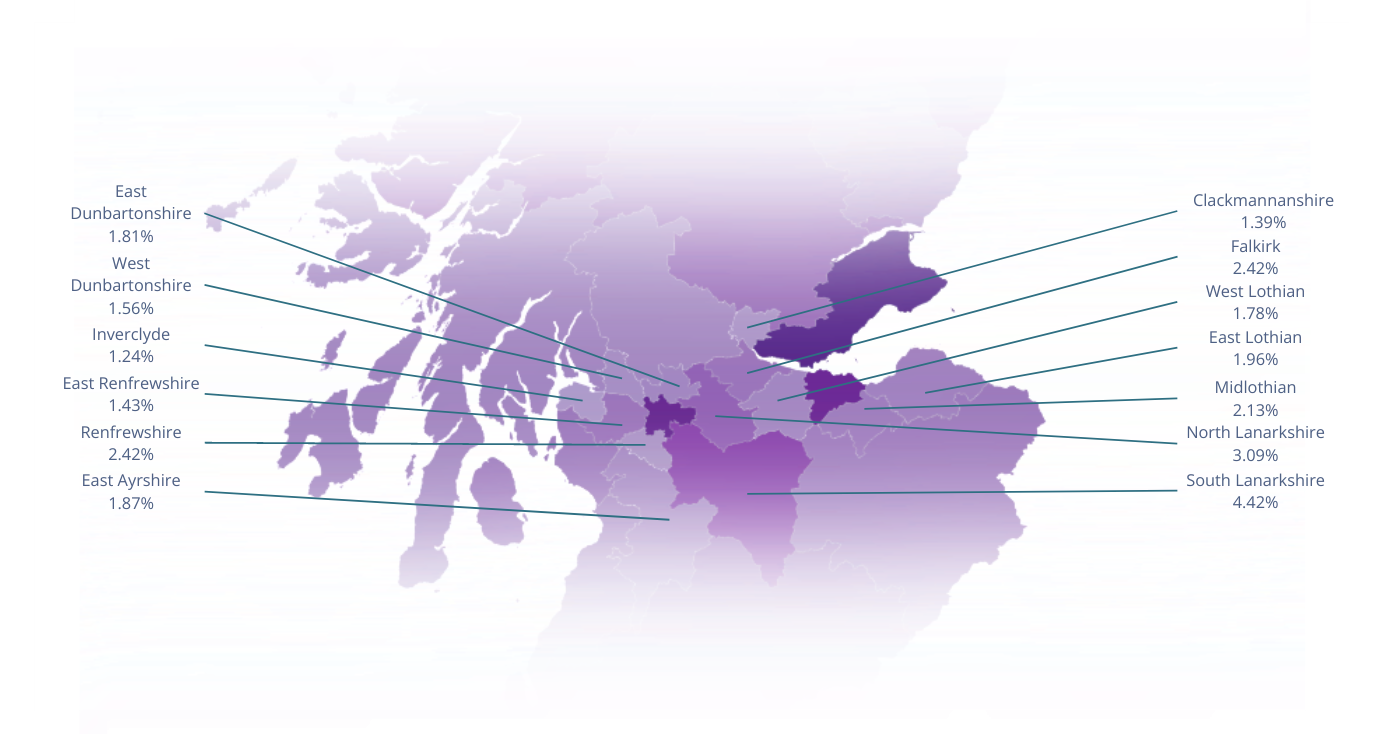Let’s Be Heard: Sharing Respondents' Pandemic Experiences, Impacts, and Lessons to be Learned in Scotland | Page 2
Contents
- Introduction
- We asked: What were your experiences during the COVID-19 pandemic?
- We Asked: What were the impacts of these experiences on you or the people you know?
- We Asked: What lessons do you think should be learned from your experiences?
- Do the interim findings in this report reflect your experiences?
- The Let’s Be Heard approach and methodology
- Let’s Be Heard: Next Steps
- Acknowledgements
Introduction
Let’s Be Heard is the Scottish COVID-19 Inquiry’s listening project. It gives everyone affected by the devolved strategic response to the COVID-19 pandemic in Scotland between 1 January 2020 and 31 December 2022 the opportunity to share their experiences with the Inquiry.
It is the main way in which people can contribute to the Inquiry and aims to give a voice to as many people across Scotland as possible. Let’s Be Heard allows people to tell the Inquiry about their experiences of the pandemic, how these affected them and any lessons they believe should be learned.
This report aims to set out the preliminary findings from experiences shared with Let’s Be Heard to date. It is hoped people in Scotland who have not already engaged with the project will recognise some of their own experiences in those already shared by others and be encouraged to take part before the National Engagement Period ends on 20 December 2023.
Drawing on a random sample size of 675 experiences, from more than 4,000 responses collected from individuals and groups across Scotland, this report shares an initial thematic analysis from the three key questions Let’s Be Heard has asked the public. These are:
- What were your experiences during the COVID-19 pandemic?
- What were the impacts of these experiences on you or the people you know?
- What lessons do you think should be learned from your experiences?
Structure of this report
The report will begin with some background on the Scottish COVID-19 Inquiry and the establishment and approach of Let’s Be Heard. It will provide an overview of the project’s aims, who Let’s Be Heard has heard from, and the analytical approach taken to produce this report.
The main part of this report, comprising three sections, will share the early findings from experiences submitted to Let’s Be Heard, focusing on experiences, impacts and lessons to be learned. Direct quotes from respondents are provided throughout the report to ensure lived experience is at the forefront of Let’s Be Heard’s preliminary findings.
It is important to note that the thematic findings represent the views of those who participated with Let’s Be Heard. They do not represent, nor anticipate, the Inquiry’s conclusions.
The analysis in this report is not exhaustive but provides early insights on the content of responses gathered through Let’s Be Heard, and their value to the Inquiry.
The report will conclude by providing an overview of Let’s Be Heard’s approach and the next steps it will take, which include identifying the groups and communities which have not been adequately represented thus far in the project. It is hoped that people in Scotland who have not already engaged with the Inquiry via Let’s Be Heard will be encouraged to do so and to help address the information gaps needed to understand any unequal impacts of the devolved strategic response.
Let’s be Heard and the Scottish COVID-19 Inquiry would like to express their sincerest gratitude to everyone who has responded so far, and the organisations which have facilitated those responses, as the findings from the accounts shared will be crucial to informing the Inquiry’s investigations, reporting and final recommendations.
Background to the Inquiry and Let’s Be Heard
The independent Scottish COVID-19 Inquiry was set up on 28 February 2022 and has been chaired by Lord Brailsford since 28 October 2022. The purpose of the Inquiry is to establish the facts of, and learn lessons from, the strategic devolved response to the COVID-19 pandemic in Scotland between 1 January 2020 and 31 December 2022.
Figure 1: A Visual Overview of the Inquiry’s Areas of Investigation

An illustration depicting the 12 areas defined in the Inquiry's Terms of Reference, including the provision of health and social care, education, business, and welfare assistance and financial support.
The Inquiry’s Terms of Reference (ToR) set out the 12 broad areas it is investigating to identify the lessons that should be learned and make recommendations so Scotland is better prepared in future. These include areas such as the provision of health and social care, education, business, and welfare assistance and financial support.
To support the development of any recommendations the Inquiry might make, it needs to hear from the people who were directly impacted by the devolved strategic response to the pandemic in Scotland. That is why the Inquiry has established a listening project, Let’s Be Heard: Sharing Scotland’s COVID Experience.
Those who wish to take part do not need to have had COVID-19, as Let’s Be Heard is interested in gathering all types of experiences. The information gathered through Let’s Be Heard has equal value to that gathered in other ways, such as at the Inquiry’s impact hearings.
Let’s Be Heard’s aims
Let’s Be Heard has three principal aims:
- To widen participation in the Inquiry by ensuring lived experience is included in its evidence base.
- To provide guidance to the wider Inquiry and help steer the Chair’s investigatory work from an early stage. This will ensure the experiences of those who take part play a crucial role in steering the work of the Inquiry.
- To provide an evidence base to support the Inquiry’s reports and recommendations.
A key focus for the Inquiry, and therefore Let’s Be Heard, is investigating whether there were any unequal or disparate impacts for particular groups and individuals. Therefore, Let’s Be Heard has been designed and implemented with inclusivity and accessibility at its heart.
To that end, the design of Let’s Be Heard has been informed by several approaches, including trauma-informed, equalities and human rights-based approaches.
Who Let’s Be Heard has heard from so far
A key part of the work of Let’s Be Heard is to help the Inquiry determine whether the pandemic in Scotland affected people in different and unequal ways. To help it do this, Let’s Be Heard is collecting equalities data alongside people’s responses to the three core questions.
People can choose to complete optional additional questions about protected characteristics, including age, sexual orientation and ethnicity. Collecting this data helps Let’s Be Heard better understand the background, intersectionality and inequalities that surround people’s experiences and report on them. This data will also be used during the Focused Engagement Period to identify what places, communities and groups Let’s Be Heard should focus on engaging with next.

Demographic summary
Age
Middle-aged people were the most frequent respondents to Let's Be Heard, with 46% of participants telling us they were aged 45-64. Children and young people accounted for 9% of participants.

Gender
Of those respondents who told Let's Be Heard their gender, 68% were female. About 1% identified as non-binary, trans or having a trans history.







